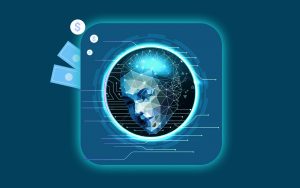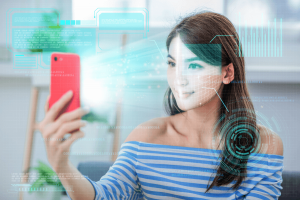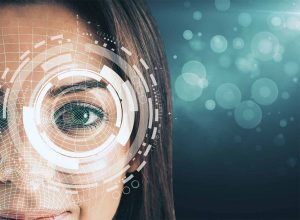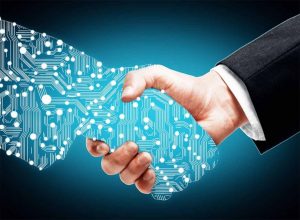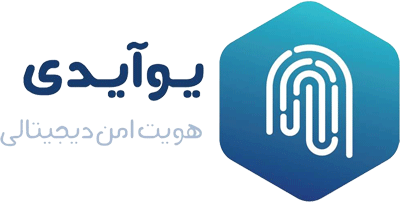Biometric authentication involves the use of a few a part of your physical makeup to authenticate you, this can be a fingerprint, an iris test, a retina test, or some other bodily feature. A single function or a couple of characteristics may be used.
The government and the administration are facing several problems at the same time. They need to control illegal immigrants, fight terrorism, cybercrime, and fraudulent elections, while at the same time making it easier to cross borders. Documents that comply with new international standards and regulations should be published to ensure the security of production systems, the testing of such materials, and the interoperability of data.
Biometrics has long been the goal of future identity verification, and we expected that biometrics would largely replace our current methods of identity verification and access control. Biometric systems can be utilized in excellent modes as follows.
Verification (1–۱): figuring out whether someone is who he claims to be. Inside the verification mode, the system validates the person’s identity by evaluating the captured biometric statistics with the template saved in the database.
Identity (1-n): determining who this person is. In the identification mode, the machine identifies the individual via looking at the templates of all users in the database for a match.
The biometric system’s working principle is to obtain the individual’s biometric data, extract the feature set from the data, and compare the feature set with the template in the database, as shown in the following figure.
What are biometric strategies?
Using biometrics, or mainly precise human characteristics, has existed for hundreds of years in one shape or any other, whether it’s a bodily description of a person or possibly more currently an image. Biometric authentication techniques are classified via the sort of characteristics evaluated: physiological attributes or behavioral singularities.

Physiological Biometric
Physiological Biometrics Physiological biometrics are based on classifying someone in line with data received as a component of the physical body, like fingerprints, face, or eye iris.
Fingerprint recognition
The most popular biometric technology to date, fingerprint recognition, can use various classification methods based on the details, which are the reproduction of the friction ridges of the skin epidermis found on the palm sides of the fingers and thumbs palms, and soles of the feet. We can use them for authentication because of the following basic principles. A fingerprint will continue to be unchanged for the duration of a character’s lifetime.
Fingerprints have general ridge patterns that allow them to be systematically classified. A fingerprint may be a character characteristic because no two fingers have yet been determined to possess equal ridge features
Facial recognition
The system uses a digital video camera to record facial images and then analyzes facial features, such as the distance between the eyes, nose, mouth, and the edge of the chin. The facial recognition system analyzes the shape and position of different face parts to determine a match.
Face recognition for security purposes is a branch of face detection technology used to recognize faces in complex images containing multiple faces. Although the technology is still developing rapidly, the security level it currently gives no longer yet rivals that of iris scanning or vein pattern recognition.
Iris recognition
The iris is the colored tissue surrounding the eye’s pupil and is composed of complicated patterns with many furrows and ridges.
When performing an iris scan, the scanner reads the iris’s precise characteristics and then transforms them into an encrypted barcode. As we all know, iris scanning is a brilliant safety technique, mainly when performed under infrared light. Hygiene is another frequently mentioned drawback because many systems require customers to place their chin on the chin that countless people have used before.
Finger vein pattern recognition
In this case of vein pattern recognition, the ending factors and bifurcations of the veins within the finger are captured in the shape of an image, digitized, and transformed into an encrypted code.
This technique, combined with the reality that veins are found under rather than on the surface of the skin, makes this era considerably more secure than fingerprint-primarily based identification and faster and extra convenient for the consumer.
Another factor to bear in mind is that finger vein pattern recognition is that icy fingers and `dead` fingers (including those of human beings suffering from Raynaud’s syndrome) are impossible or hard to read.
Palm vein pattern recognition
This technique is likewise based on the recognition of precise vein patterns. However, as more reference factors are used than finger vein pattern recognition, this is a better, simpler, and extra secure identification technique. Access manage systems primarily based on palm vein pattern recognition are pretty expensive.
Voice Verification
Voice verification is a form of biometrics that involves using voiceprints and recognizing the consumer’s telephone; an aggregate called a voice token. It’s far regarded as a next-technology authentication technology.
Let’s compare biometric authentication methods based on Security, Accuracy, and Costs.
Security
Considering the risks posed by potential attacks and their complexity, it is the system’s advantage in covering risks and its effectiveness in resisting possible attacks.
- High security: fingerprint, hand geometry, iris, retinal.
- Medium security: facial, voice.
Accuracy
Due to variations within the environment where data is collected or among readers employed in biometrics, a 100% accuracy can’t be achieved. Thus, sure overall performance thresholds need to be described to take into account reliable biometric technology. The conventional metrics used to assess biometrics performance are the FAR and the FRR.
- Hight accuracy: fingerprint, iris, retinal.
- Medium accuracy: facial, hand geometry, handwritten signature, and voice.
Cost
The economic impact of the technology on the entire certification system, such as costs of implementation, maintenance, etc
- High cost: hand geometry, iris, retinal and handwritten signature.
- Medium cost: fingerprint.
- Low cost: facial, voice verification.

Where are biometrics used?
Historically, the authorities initiated applications using biometric technology under a strictly regulated legal and technical framework to control military access, criminal or civil identification. Today’s industries, including banking, retail, and mobile commerce, have shown an actual demand for the advantages of biometric technology.
Biometric systems are very useful in places where identification and authentication are essential. Let’s quickly review the most typical use cases for biometrics:
- Law enforcement and public safety (crime / suspect identification)
- Military (enemy / allied identification)
- Border,traveland immigration control (traveler identification / immigrant / passenger))
- Citizenship (citizen / resident / voter status)
- Health care and subsidies (patient / beneficiary / healthcare professional status)
- Physical and logical access (owner / user / employee / contractor / partner status)
- Business applications (consumer / customer identity)
Conclusion: these days, biometric information extraction can be easily accomplished without the need for particular sensors; therefore, its implementation can be low cost while taking benefit of modern technologies, including mobile devices equipped with embedded cameras for facial recognition or fingerprints.


